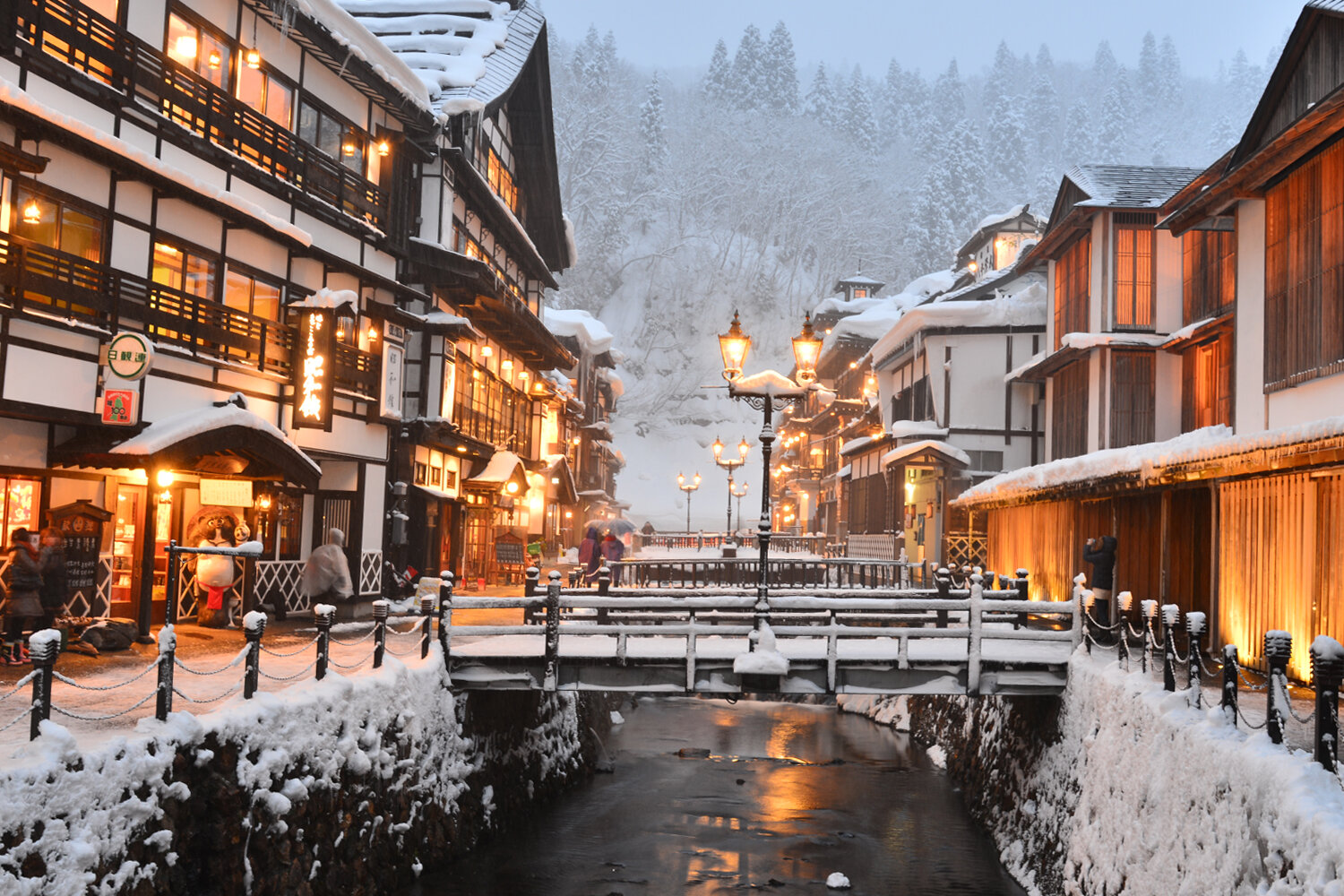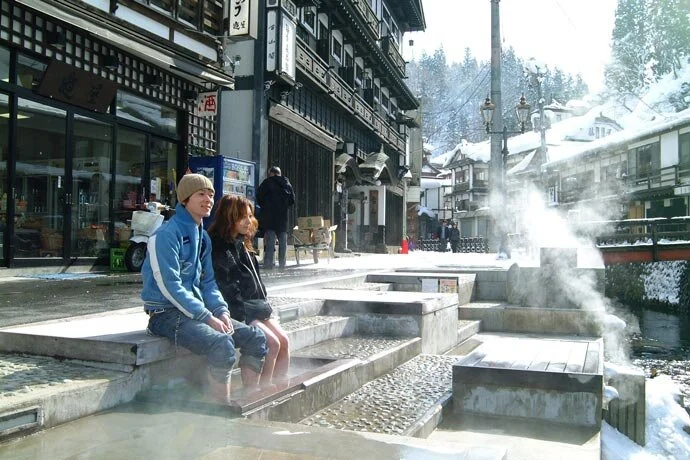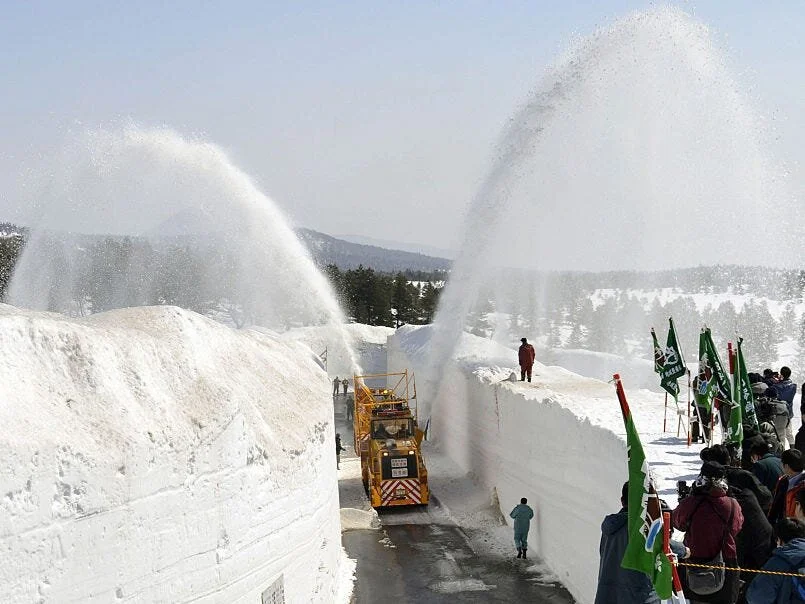5 Snowiest Prefectures in Japan - Yukiguni, 雪国
Loved the previous article where we shared our Top 5 Spots to experience Snow in Japan? You’re at the right place where we dive deeper into exactly where the snowiest prefectures in Japan are!
Yukiguni (雪国) - directly translated as Snow Country refers to areas in Japan characterised by heavy, long-lasting snowfalls and is generally understood as a reference to the Sea of Japan’s side of Japan’s main island (Honshū).
10 complete prefectures and portions of 14 others out of Japan's 47 prefectures are classified as “Heavy Snowfall Zones” where snow is severe enough to be a hindrance to the livelihood of inhabitants and the development of the local industry.
Source: Snow in Japan
Fun fact: Do you know, Japan alone takes up 4 spots within the “Snowiest Cities in the World” - which makes it the perfect country to experience the snowiest cities in the world, all possible within a single trip!
5. Nagano Prefecture (長野県, Nagano-ken)
Nagano Prefecture (長野県, Nagano-ken) - Having hosted the 1998 Winter Olympics and the 1998 Winter Paralympics, it is a no brainer that Nagano deserves a spot on this list! Apart from being home to five Olympic venues, including the Minami-Nagano Sports Park used to host the opening and closing ceremonies, Nagano is also famed for their snow monkeys! Read more about Nagano’s Snow Monkeys here!
Hakuba Happo-One Winter Resort (白馬八方尾根スキー場, Hakuba Happōone Sukī-jō)
Source: Japan Times
Hakuba Happo-One Winter Resort (白馬八方尾根スキー場, Hakuba Happōone Sukī-jō) - Located on the eastern slopes of Mt Karamatsu, Hakuba Happo-one is one of Japan's largest and oldest ski resort endowed with breathtaking panoramic view of the Hakuba mountain range. As the host for the alpine skiing downhill, super giant slalom, and combined slalom events during the 1998 Winter Olympics, Happo-one receives an average snowfall of 11 metres!
Snow Walls of Mount Norikura (乗鞍岳, Norikura-dake)
Source: Alpico
Mount Norikura (乗鞍岳, Norikura-dake) - The Norikura Skyline is a road through the mountain that has to be closed for much of the year because of heavy snow fall. Dying to experience snow walls but not a fan of tours and prefer minimal crowd compared to The Hakkoda Walk? We have good news! From late April to June, this wall of snow opens for visitors to walk or take a bus ride (no private cars allowed) through and admire the towering wall, which can be up to 10-meters high.
4. Akita Prefecture(秋田県, Akita-ken)
Akita Prefecture (秋田県, Akita-ken) is a prefecture of Japan located in the Tōhoku region of Honshu. Snow fall in certain areas in Akita can get up to almost 7 metres. Sitting amongst Akita's main draws are its natural beauty of mountains and the sea, hot springs and the town of Kakunodate, which preserves one of Japan's most interesting samurai districts.
Akita Nairiku Line (秋田内陸線, Akita Nairiku-sen)
Source: WOW! Japan
Akita Nairiku Line (秋田内陸線, Akita Nairiku-sen) - A single railway line through the unspoiled Japanese landscape, the Akita Nairiku Line dates all the way back to the 1930s.
Enjoy the scenic display of snowdrift gathers when you gaze out of the train as if you had stepped into a sumi-e, an inkwash painting from centuries ago as it crosses 94.2km through pristine natural landscape from Kakunodate to Takanosu.
Kamakura Snow Festival, Yokote (横手市, Yokote-shi)
Source: Hi Asia
Kamakura Snow Festival, Yokote (横手市, Yokote-shi) - This event is a traditional winter festival with over 450 years of history held in the days leading to the Bonden Festival hosted in Yokote City, Akita Prefecture. The festival area from extends east of Yokote Station to Yokote Castle.
”Kamakura” is a snow dome house - the igloo like hand-made dome huts measures up to two meters in height. A kamakura was traditionally a place of worship for shinto gods but now it also serves as welcoming Japanese hospitality where visitors get to come inside to enjoy grilled mochi and warm cups of amazake - sign me up right now!
3. Yamagata Prefecture (山形県, Yamagata-ken)
Yamagata Prefecture (山形県, Yamagata-ken) - a large prefecture along the Sea of Japan coast in the southern Tohoku Region famed for its agricultural products, especially cherries, hot springs, rural flair and natural landscape.
Juhyo in Yamagata Zao Onsen Ski Resort (山形蔵王温泉スキー場, Yamagata Zaō Onsen Skī-jō)
Source: Forbes
Yamagata Zao Onsen Ski Resort (山形蔵王温泉スキー場, Yamagata Zaō Onsen Skī-jō) - tucked between the mountains of Yamagata and Miyagi prefectures, Zao Onsen Ski Resort is a popular ski destination with traditional onsen all year and also one of only a few places in Japan where Juhyo or "ice trees" can be observed.
If you happen to be in the resort late December to late February, treat yourself to the spectacle of illuminated Juhyo and transcend into another dimension during the Juhyo Light Up Event (樹氷ライトアップ).
Ginzan Onsen (銀山温泉)
Source: All about Japan
Ginzan Onsen (銀山温泉) - Known as one of Japan's most beautiful onsen towns with historical ryokans lined up along the Ginzan river, this almost 100-years-old secluded hot spring town is nestled in the mountains of Yamagata Prefecture. The mountains that surround this town yield rich hot spring water that is used both in the private hotels and public baths in the city centre.
Feast your eyes and soak in the rustic charms of this town as colourful wall plasters known as Kote-e can be seen adorned on walls of hot spring inns while snowflake designs embed tiles on the roads.
Source: JP Visitor
P/s dont forget to relax your feet in hot spring water rising directly from its source at the Warashiyu footbaths along the Ginzan River while exploring the town!
2. Hokkaido Prefecture (北海道, Hokkaidō)
Hokkaido Prefecture (北海道, Hokkaidō) - the second largest island of Japan is known for its beautiful snowy landscapes and winter festivals. It is also home to its capital, Sapporo, the second snowiest city in the world, right behind Aomori and host to the 1972 Olympic Winter Games. As one of the snowiest prefecture, the upper areas of the mountains in Hokkaido can accumulate from 15 to 25 metres of annual wintertime snow falls.
Mild Seven Hills, Biei (美瑛町, Biei-chō)
Source: Zekkei Japan
Mild Seven Hills, Biei (美瑛町, Biei-chō) - famous for its views of wide fields and hills, Biei is used as a backdrop for many Japanese commercials and TV programmes.
Why “Mild Seven Hills”? - A TV commercial for Mild Seven tobacco was filmed at this specific location in Biei in 1978, therefore the moniker “Mild Seven Hills”.
Larch forest line up perfectly atop the slope of the wheat field, creating a dreamlike majestic sight. The best time to bask in this magical landscape during mid-winter would be around 2–3 pm. It is at this precise time span that the sun is right above the trees, causing the trees to form long shadows along the snowy vast landscape.
The Blue Pond (青い池, Aoiike)
Source: Canon Asia
The Blue Pond (青い池, Aoiike) - Named after is deep blue colour which it owes to natural minerals, the blue pond transitions into different hues of blue from milky light blue to a deep green-turquoise depending on the season and the weather.
The pond was not accessible in winter until a couple of years ago. Blankets of pure white snow will pile up on the pond as it freezes over during Winter, birch trees will soon be covered with white powder - an alluring sight further magnified by the illumination.
Source: Shutterstock
The frozen surface of the Blue Pond is lit up a fabulous array of white and blue lights every evening from November until April. Whimsical display of illumination narrates the winter season through an approximately 10-minute long sequence of light patterns.
Fun fact: The extraordinarily blue waters of the Shirogane Blue Pond rose to fame after being selected as one of Apple’s iOS official wallpaper!
1. Aomori Prefecture (青森県, Aomori-ken)
Aomori Prefecture (青森県, Aomori-ken) - famed for being the snowiest city in the world receiving the most snowfall and the “Apple City of Japan”, Aomori is accessible via a three-hour ride from Tokyo on Japan's high-speed bullet train or by flight to Misawa and Aomori.
Read more about the best spots to experience snow in Aomori here.
Cape Shiriyazaki (尻屋崎, Shiriyazaki)
Source: Tohuku Japan Official
Cape Shiriyazaki (尻屋崎, Shiriyazaki) lies on the tip of Aomori Prefecture’s Shimokita Peninsula. Throughout the vast plains, wild horses known as “Kandachime” pasture on the fields. “Kandachime” directly translated as “to stand in the cold”— are a breed of semi-feral horse known for their great stamina, short leg, stout frames and ability to withstand even the harshest northern winters.
From April to November, while Kandachime horses wander the cape, visitors can enjoy watching them graze or gallop across the horizons atop picturesque sea as the perfect backdrop - a scene plucked right out of a dream.
A snowy price to pay - $35 Million Snow Clean Up
Source: Kyodo News | Getty Images
Abundant snowfall comes with a price tag. As snow falls more in Aomori than in any other prefecture in Japan, major snow clean up efforts costing $35 million is needed to keep transportation systems, such as trains and roads functioning smoothly.
Source: Honey Travel
To prevent buildup, flatbed trucks haul excess snow to the port along the city's northern Mutsu Bay coastline before unloading it into the sea.
With only 20 flights per day, Aomori Airport prides themselves in their snow removal team which they named “White Impulse”. The 120-member team operates dozens of heavy duty snow ploughs multiple times a day in order to keep the airport's single landing strip ice-free during the worst winter weather.
Can your heart handle the turbulent snowy flights to the snowiest cities in the world?
Enjoy reading bite-sized Japanese travel articles like this? Here are some reads you might like!














